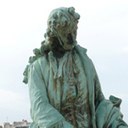0099 Monuments Devoted to Artists in Public Spaces around Museums
A Nineteenth-Century Strategy to Enhance the Urban Space of Art Districts
Identifiers (Article)
Identifiers (Files)
Abstract
Monuments to kings or military heroes have always been positioned in main squares and avenues, whilst those erected to famous cultural figures were a novelty introduced in the Enlightenment and Romanticism, placing busts or sitting monuments to writers or musicians in secluded gardens and in the surroundings of libraries, theatres, etc. During the nineteenth century, monuments to artists became also a common feature in many cities, where a most likely emplacement for them was in front of some art museum. In a way, they were a complement to the ornaments of such building, usually decorated with portraits and inscriptions glorifying great artists; but the monument to Murillo erected in 1863 by public subscription in Seville's Plaza del Museo was also an urban milestone, catching the attention of promenading public passing along a lateral street. Later, the monuments erected in the piazzas around the Prado Museum in Madrid, or in gardens outside the Louvre, became a popular prototype, emulated in many other cities up to the early 20th century. Their role as interfaces between public spaces and museum sites would thereafter be taken over by other kinds of artistic landmarks: not monuments to artists, but monumental artworks, often owned by the museum itself, thus bringing part of its collection outside, as a welcome starter to prospective cultural consumers.
Statistics


License

This work is licensed under a Creative Commons Attribution-NonCommercial-NoDerivatives 4.0 International License.



